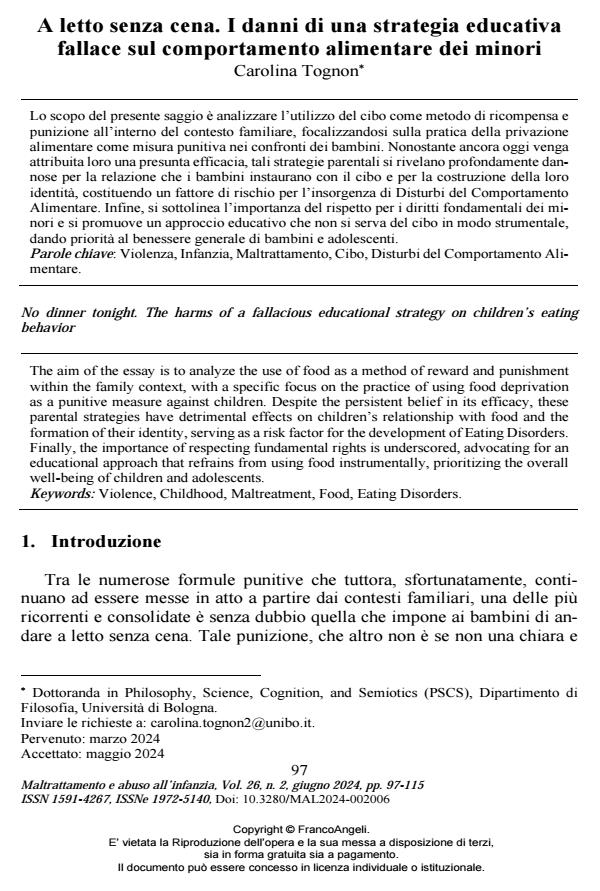No dinner tonight. The harms of a fallacious educational strategy on children’s eating behavior
Journal title MALTRATTAMENTO E ABUSO ALL’INFANZIA
Author/s Carolina Tognon
Publishing Year 2024 Issue 2024/2
Language Italian Pages 19 P. 97-115 File size 211 KB
DOI 10.3280/MAL2024-002006
DOI is like a bar code for intellectual property: to have more infomation
click here
Below, you can see the article first page
If you want to buy this article in PDF format, you can do it, following the instructions to buy download credits

FrancoAngeli is member of Publishers International Linking Association, Inc (PILA), a not-for-profit association which run the CrossRef service enabling links to and from online scholarly content.
The aim of the essay is to analyze the use of food as a method of reward and pun-ishment within the family context, with a specific focus on the practice of using food deprivation as a punitive measure against children. Despite the persistent belief in its efficacy, these parental strategies have detrimental effects on children’s relationship with food and the formation of their identity, serving as a risk factor for the develop-ment of Eating Disorders. Finally, the importance of respecting fundamental rights is underscored, advocating for an educational approach that refrains from using food instrumentally, prioritizing the overall well-being of children and adolescents.
Keywords: Violence, Childhood, Maltreatment, Food, Eating Disorders.
Carolina Tognon, A letto senza cena. I danni di una strategia educativa fallace sul comportamento alimentare dei minori in "MALTRATTAMENTO E ABUSO ALL’INFANZIA" 2/2024, pp 97-115, DOI: 10.3280/MAL2024-002006